As many pro anglers will tell you, you don’t need to travel far to catch fish. Some of the best fishing opportunities are in overlooked waterways in the center of cities. With Americans searching for recreation closer to home—and at a healthy distance from other people—urban angling just may be one of the best ways to get outside inside (or near) a city.
We asked some of the top fishing experts in the country for their tips on where to go and how to consistently find and catch fish—everything from largemouth bass to saltwater stripers—in urban areas.
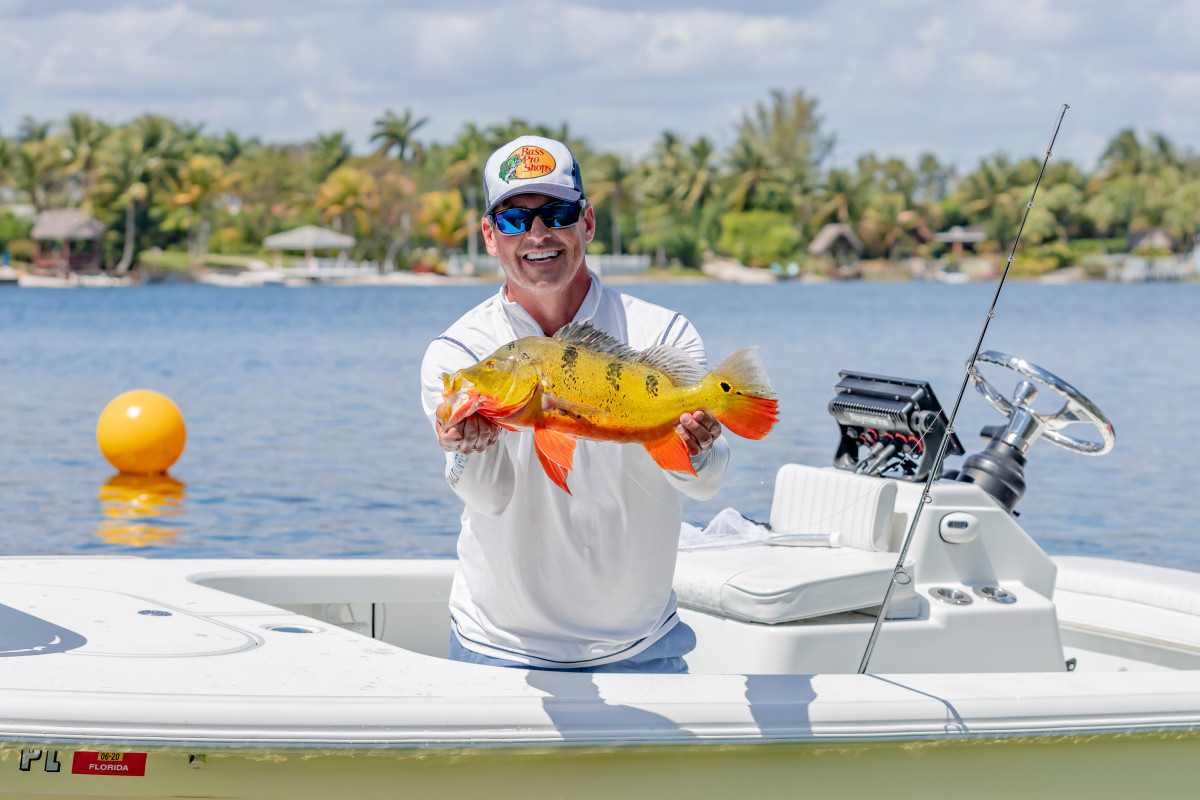
Peter Miller
Professional fisherman, Emmy nominated TV host of Bass 2 Billfish
Miami, FL
“In Miami, there’s a canal system that runs through the majority of the city, and people catch everything from bass to peacock bass to freshwater snook to freshwater tarpon in it. There are big carp that people catch on bread balls and a fish called a pacu. They’re giant. I’ve seen 60–70 pounders.
What I would recommend is going to a local canal and working the culverts, the tubes that run underground. That’s where the fish like to hide out, and they’ll come out and eat from there. And any corner, as opposed to a long, long straightaway, can work, too. Fish can ambush baitfish there. So any corners, any culverts, any shady spots. When we get a lot of rain, they have to open up the canal system out to the ocean, so all the water rushes through the canals. When that happens, the snook and tarpon can be found sitting in the current waiting for bait to wash into them. So as soon as those waterways open up, people go crazy over the snook bite. It’s all over, too, from Palm Beach to Fort Lauderdale to Miami.
If you’re targeting largemouth bass, I think one of the deadliest lures is a Senko worm, and I use a pumpkin colored Senko, with purple and green fleck, and I’ll rig that Carolina-style with a bullet weight and a worm hook. I’ll work it along the bottom really slow.
For the peacock bass, what I like is small-profile lures, because peacocks like to, believe it or not, eat their own babies. I use a small yellow Bucktail jig with a little deer hair on the back, with a little weighted head, and I’ll put a yellow curly tail grub on the hook. I cast it and then reel it in as fast as I can parallel to the shoreline. The peacocks race up and they nail it. So they’re very different, but so much fun to catch. Anyone can do it.”
Tom Rosenbauer
Orvis fishing ambassador, author, fly-fisherman
Vermont
“I find urban fishing to be fascinating. It’s another slice of life, and fly fishing can still be really fun in urban areas. People so often equate fly fishing with trout, but it’s an efficient method and fun method to catch all kinds of fish.
To start, I would get a five or six or seven weight rod and a nine foot long floating line. I’d tie on a clouser minnow. There are very few things that you can’t catch on a clouser minnow.
You can catch stripers if you’re in salt or brackish water. You can catch large and smallmouth bass, and you can catch panfish like rock bass and crappie. I’ve caught channel cats on clouser minnows and pike. Anything that will eat a baitfish will eat a clouser minnow. White bass, white perch, yellow perch—God, the list goes on and on.
Just throw it into places where there is a little bit of a drop-off in depth, and then strip it back to you, varying your retrieve to figure out what the fish are interested in. That’s exactly what I would do if I were in a new city and I saw a body of water that looked interesting.
You generally want to look for some kind of structure, rocks or drop offs, or edges of currents, or lily pads. Structure could be deeper water, too—fish can hide in deeper water.
Carp are something that I love to chase, because they’re big and they’re spooky and they’re hard to catch. They’re a real challenge, but they’re rewarding when you figure it out. If the water’s clear enough, you can see them cruising and then you can cast a small nymph—or sometimes I use bonefish flies—in front of them and then just twitch it very slowly. You don’t want to move it very fast.
The best part about carp is they’re everywhere, particularly in waters that other fish won’t inhabit, because they have a low dissolved oxygen requirement. They can live in water that’s too warm or even too polluted for other species of fish. They’re moody fish, but one of my favorite to catch.”
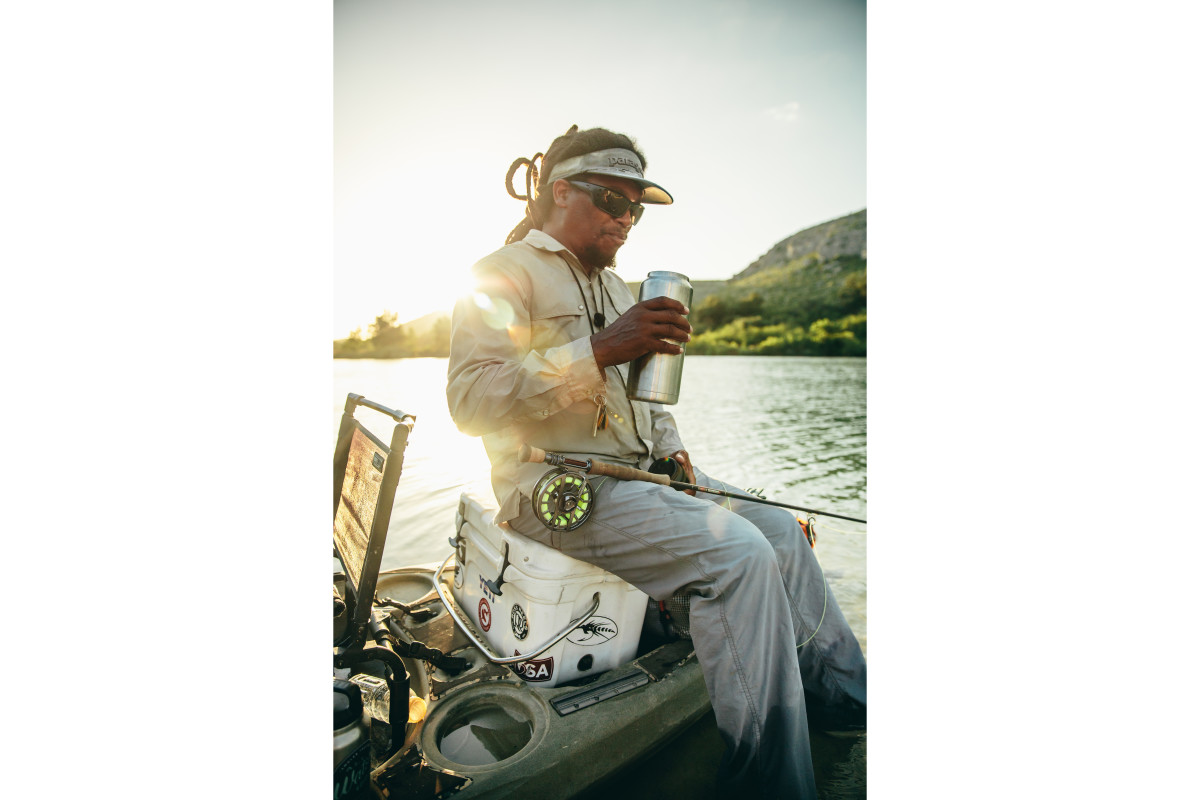
Alvin Dedeaux
Fly-fishing guide, YETI Ambassador
Austin, TX
“Everyone knows Austin is one of the coolest cities anywhere, but hardly anyone knows that within sight of the Austin skyline there is an amazing, almost untouched, bass fishery. While there will be hundreds of people on the six miles of the Colorado River in downtown Austin (Lady Bird Lake), The Lower Colorado River, the LoCo to us insiders, offers 100 plus miles of virtually untouched water, even on weekends. It’s just a short drive from hipster heaven to bass fisherman’s paradise.”
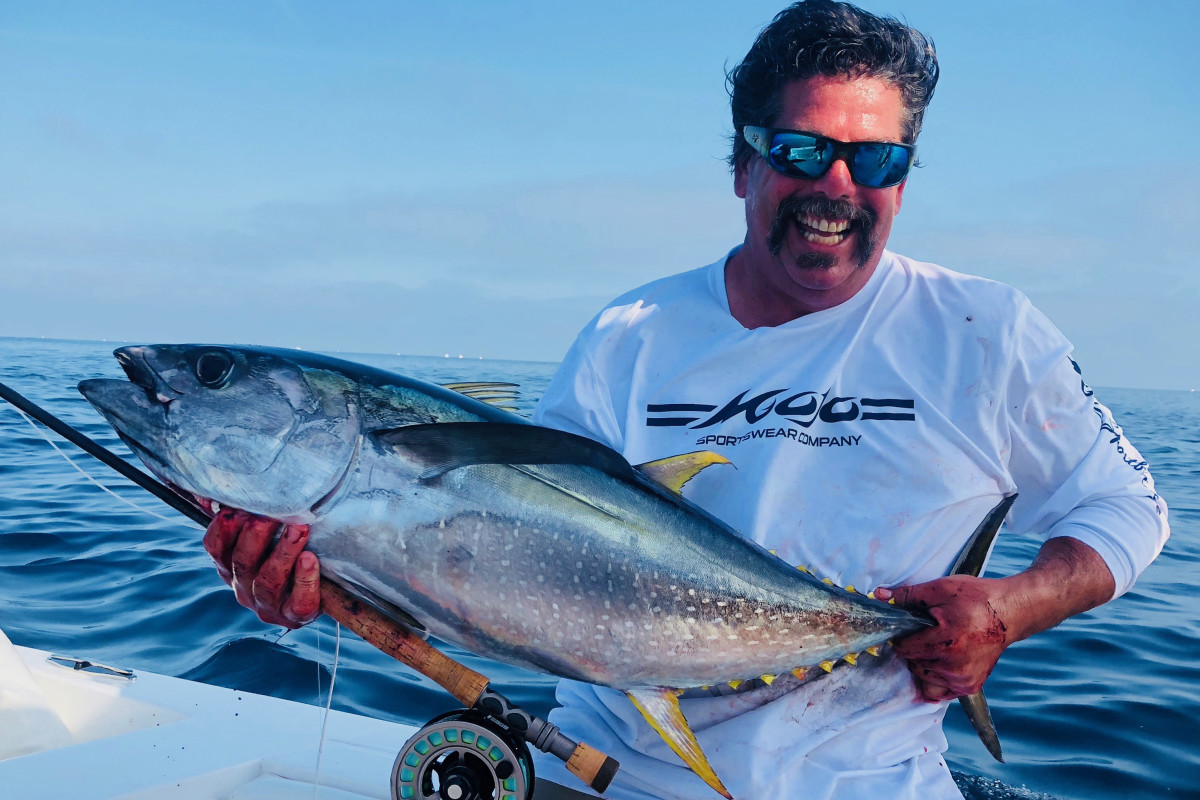
Capt. Frank Crescitelli
Guide, owner of Fin Chaser Charters
Long Beach Island, NJ
“Striped bass, from North Carolina to Maine, are very structure-oriented fish. My approach is not to overthink the situation. You’ve got to start with the basics: you need structure, you need current—which relates to some people as tide—water temperature, and light. They’re obviously more active in low-light situations, so dawn, dusk, pure night, or overcast days. Generally, they don’t like being in water over 80-degrees, so somebody was fishing in a little bay that gets really warm, that’s probably not a striped bass spot. So that leaves current or tide, and it has to have structure.
The other thing that keeps them in a spot is bait. As a general rule, fish eat 10 percent of their bodyweight a day, especially with a fish that migrates, like striped bass do. They’re burning a lot of energy in moving water, so they’re feeding or waiting to feed. That’s why they’ve become such a sought-after game fish, because they’re very aggressive. A striped bass needs to eat all the time, you know?
If I was putting together a bag that I was taking with me for striped bass, I certainly would have to have a bucktail in there, right? You certainly wouldn’t approach striped bass fishing without it. And I love catching them on top with the poppers. I have a small tackle company called Guides Secret that makes some old-school ones. Striped bass are a great fish to catch on poppers, and bluefish as well.
You can easily catch them on a fly, too. A lot of people don’t like sinking lines with their fly rods, they want to be purists, but sinking lines can be deadly. On a boat in New York Harbor, it’s a great way to catch bass and bluefish.
The first time Jack Handey, the SNL guy, came out with me, years ago, he caught striped bass, bluefish, and albies [false albacore] all on a fly, all in New York Harbor. He looks at me, he goes, ‘I’ve lived in New York City for 30 years, and I never fish here. I just got an inshore slam on the fly.’ He said, ‘What’s wrong with me, you know?'”
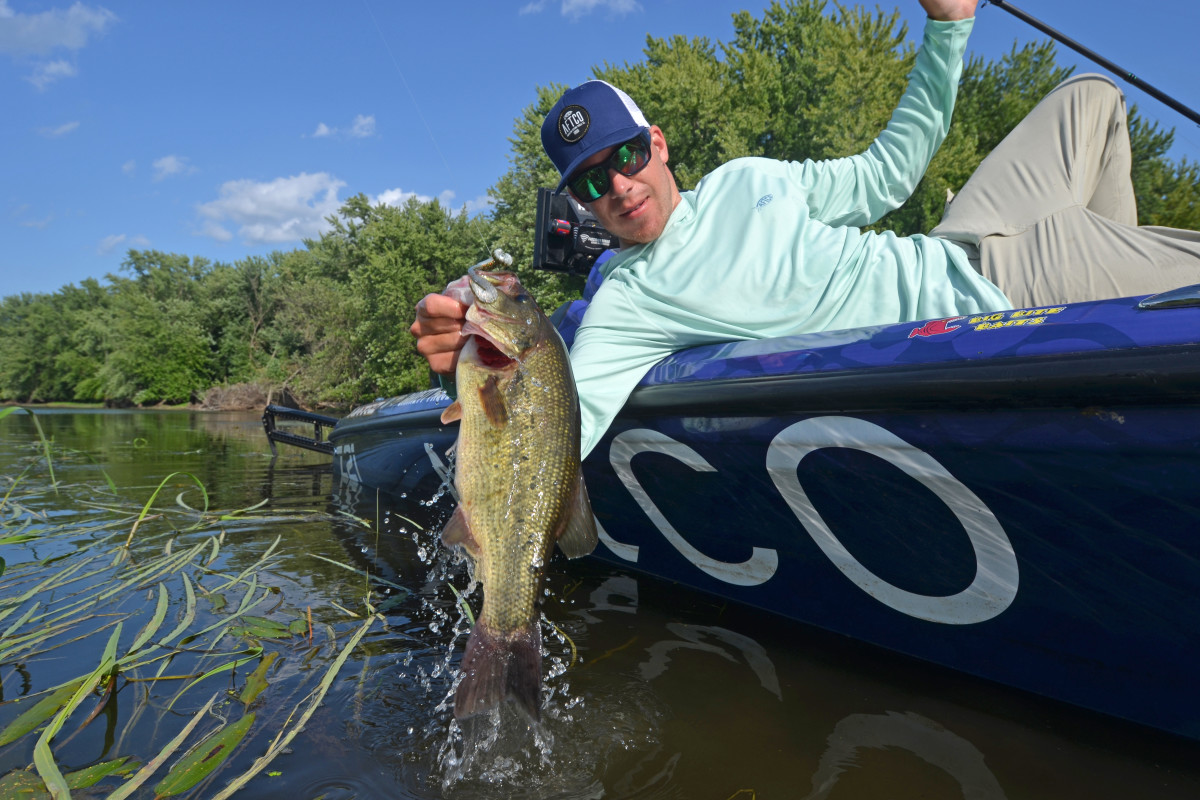
Garrett Paquette
Professional angler on Bassmaster tour, guide on Detroit’s Lake St. Clair
Canton, MI
“Metro Detroit is full of opportunities to catch fish, even from the shore. In early spring through the summer, smallmouth can be caught standing on most piers, docks, and seawalls on Lake St. Clair that allow public access. The ones around dugout canals or marina entrances are usually best. Reel a crankbait or drag something slow on the bottom, like a tube jig. Those are great techniques to get bites. Another cool opportunity to fish from the shore is the Detroit River in the late spring and early summer. White bass gang up in large packs and will eat almost any small lure reeled by them. You can catch over 100 fish in a day during their run.”
Roy Leyva
Professional angler, brand specialist at Fish Shimano North America
Boston, MA
“Many urban waters are overlooked, and so they hold some big fish—bass, carp, panfish, catfish, and even snook and tarpon, depending on where you live. As a young kid, growing up in Boston, fishing was my passion. There were two nearby watering holes, the Muddy River and Jamaica Pond, So I did what any 11-year-old with a fishing rod would do: I jumped on my bike, rod in hand, and started going by myself. Over the years, I started developing a technique using swimbaits ordinarily used for striped bass—7- to 12-inch wooden or plastic baits. Like anything new, there was trial and error. The hardest part for throwing these large baits was the gear.
Today, I fish G. Loomis IMX-Pro swimbait series model IMX PRO 965C SWBR. This rod is perfect for handling big baits ranging 2 to 6 ounces, with plenty of backbone for monster bass. I pair it with the Shimano Tranx TRX300A.
Many people who throw these big baits prefer mono line, but I like using braid in the urban jungle. The reason is that a lot times you’re fishing around debris, shopping carts and cement pilings. I want a heavy line with no stretch to help me pull that big fish out of its structure.
For baits, I like the Gantarel and Gantarel Jr. by Jackall Lures. These are a great choice. For one, they resemble the No. 1 baitfish in an urban setting, the sunfish. Both baits will fish slow or at moderate speeds and they have a few tie points, too, which allow them to either swim subsurface or wake on top. Both are deadly presentations when it comes to urban fishing, and I’ve caught many large bass over six pounds with this technique. I’ve also caught large striped bass, flathead catfish, tarpon, snook, pike, and muskie with just swimbaits. In town, I still use my trusty bike to get me around.”
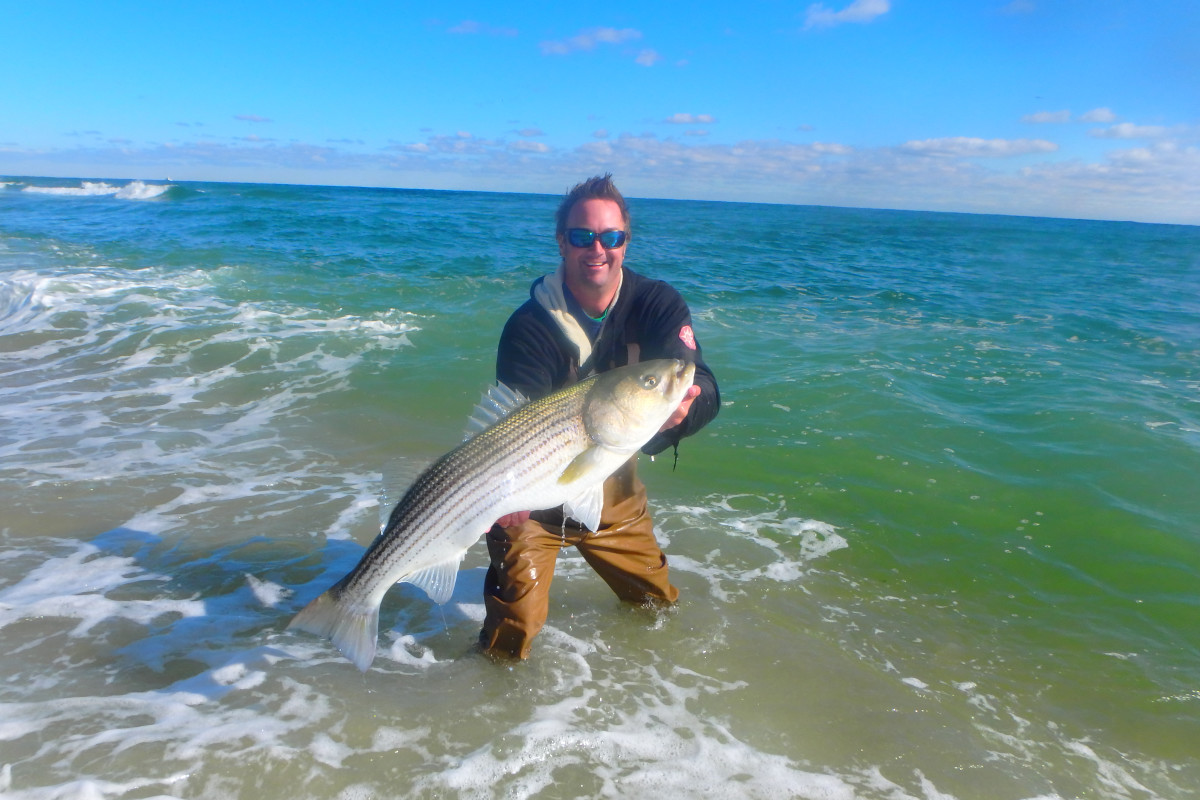
Nick Honachefsky
Sportfishing journalist, Host of Saltwater Underground TV
New York/New Jersey
“Surfcasting for striped bass and bluefish in the New York City area is legendary. Springtime, March through May, the big cows migrate up into the Hudson River to spawn and, during September through November, pass back through the metro area again on their way down the Eastern Seaboard.
We’re talking big bass with your feet planted in the Jersey sands. They go up to 50 pounds, but average anywhere from 5 to 25. Bass blow up lures such as Bomber A-Salt plugs, Tsunami Sand Eels, Storm Shads, and TA Poppers, which mimic the resident baitfish—bunker, sand eels, and spearing.
Bluefish grow to be what we call ‘alligator’ size, because of their giant teeth, along metro shores, reaching upwards of 15–20 pounds. They will readily attack and destroy any and all bait, lures, and fingers.
When fishing for blues, I try to use a single hook offering like AVA jigs, Deadly Dicks, and Yo-Zuri popper to minimize the time spent trying to navigate their razor-like teeth when unhooking.
Fall bass and bluefish blitzes are legendary, as thousands of fish erupt on bait schools, crashing in total mayhem in New Jersey’s Raritan Bayshore or near Sandy Hook, both of which are backdropped by NYC skyscrapers.”
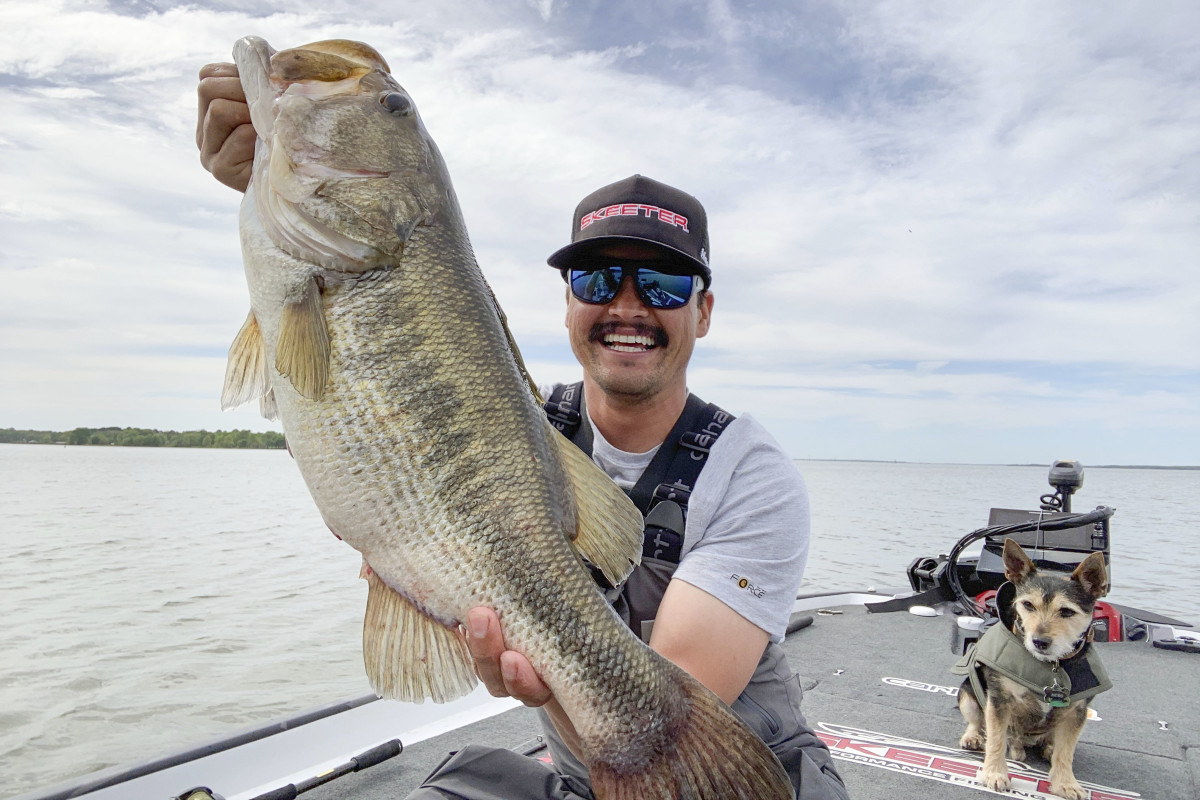
Chris Zaldain
Professional angler on the Bassmaster tour
Fort Worth, TX
“I grew up fishing in San Jose. The best thing about fishing in an urban setting are all of the man-made structures, including all of the cement piers and my favorite, outflow pipes or culvert areas. As you are fishing in canals or creeks, watch for these areas because food sources tend to accumulate around these pipes.”
from Men's Journal https://ift.tt/2Vfz56W


0 comments